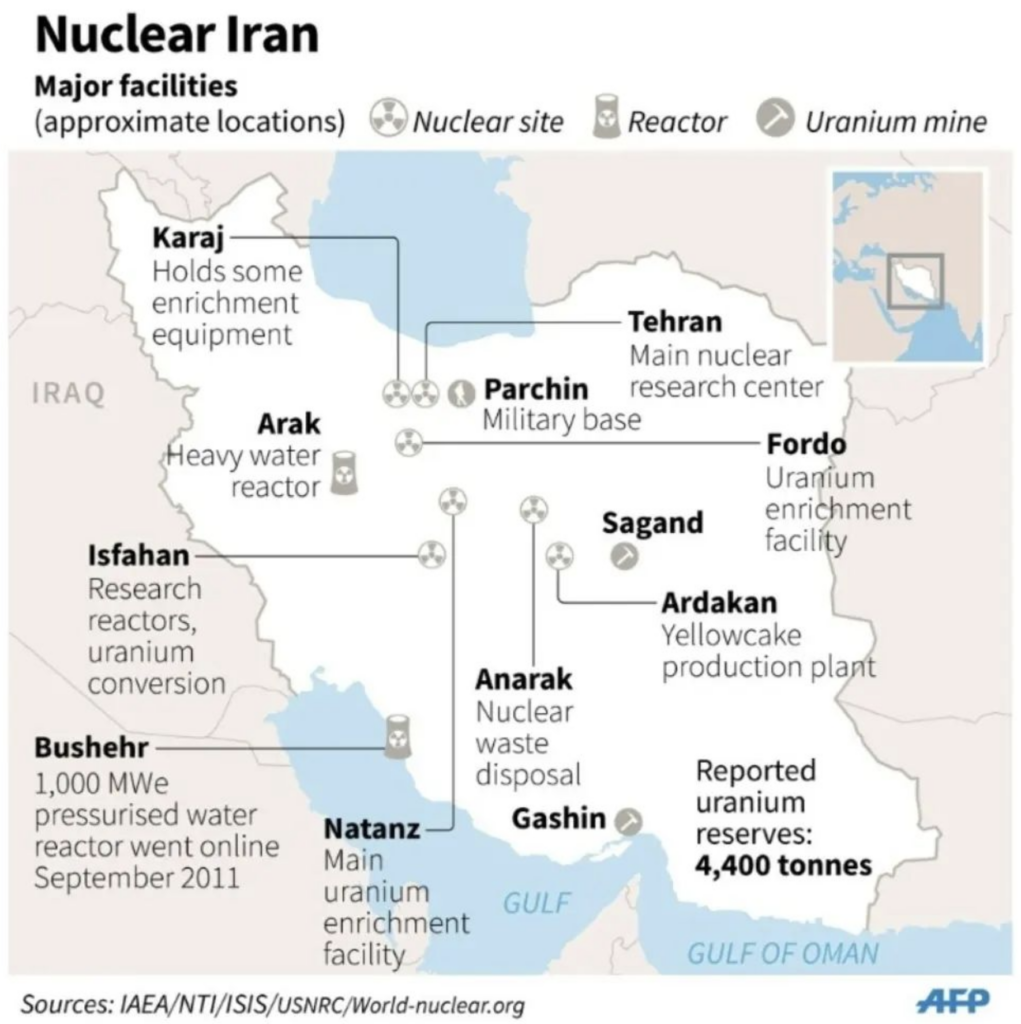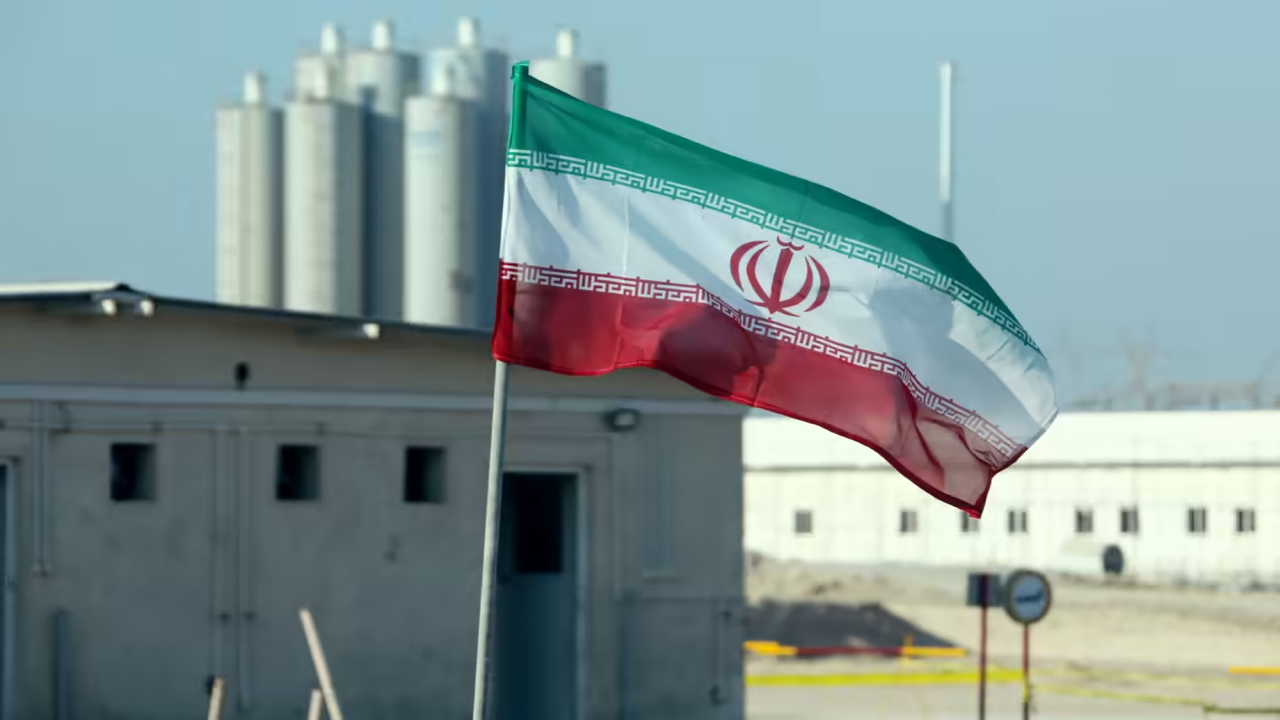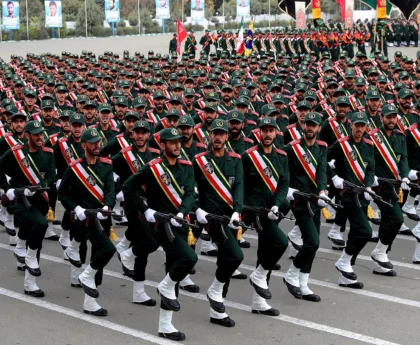Iran’s nuclear program was launched in the 1950s with the help of the United States under the Atoms for Peace program, and in 1970, Iran ratified the Non-Proliferation Treaty (NPT), limiting its nuclear program to peaceful use and making its nuclear program subject to inspection by the International Atomic Energy Agency (IAEA). Western cooperation ceased following the 1979 Iranian Revolution, after which the Islamic Republic continued its nuclear program on a clandestine basis.
The Islamic Republic has the following facilities:
- Research sites in Bonad, Lavizan, and Isfahan
- Two uranium mines in Saghand and Gashin
- Research reactor in Tehran
- Uranium enrichment plants in Natanz, Fordow, and Lavizan
- Nuclear power reactor in Bushehr and Darkhovin
- Heavy water reactor in Arak
- Yellowcake production plant in Ardakan.

In the 2000s, the revelation of the Islamic Republic’s (IR) clandestine uranium enrichment program raised concerns that the program might be intended for non-peaceful uses. The International Atomic Energy Agency (IAEA) launched an investigation in 2003 after an Iranian dissident group revealed undeclared nuclear activities carried out by Iran. In 2006, because of Iran’s noncompliance with its NPT obligations, the United Nations Security Council demanded that Iran suspend its enrichment programs. In November 2011, the IAEA reported credible evidence that Iran had been conducting experiments aimed at designing a nuclear bomb until 2003, and that research may have continued on a smaller scale after that time.
Between 2013 and 2015, the foreign ministers of the Islamic Republic and the P5+1 negotiated a deal that involves the freezing of key parts of the Iranian nuclear program in exchange for a decrease in sanctions. In 2015, Iran agreed to a long-term deal called the Joint Comprehensive Plan of Action (JCPOA) on its nuclear program with a group of world powers known as the P5+1 – the US, UK, France, China, Russia, and Germany.
On May 8, 2018, the United States officially withdrew from the agreement after U.S. President Donald Trump signed a presidential memorandum ordering the reinstatement of harsher sanctions. Up to February 2019, the International Atomic Energy Agency (IAEA) had certified that Iran was still abiding by the International Joint Comprehensive Plan of Action of 2015.
In July 2019, the International Atomic Energy Agency (IAEA) stated that Iran had breached the agreement. Iran has, since breaching the JCPOA, embroiled itself in controversy with half of the JCPOA signatories because a November 2020 IAEA report said that Iran had further developed centrifuge technology, the novelty of which was explicitly prohibited by the JCPOA.
After the start of the Mahsa Amini protests, the nuclear talks have stalled and nuclear talks are no longer on the White House agenda. The Iranian people have asked the White House to stop negotiating with the murderous regime and not give them another lifeline.





